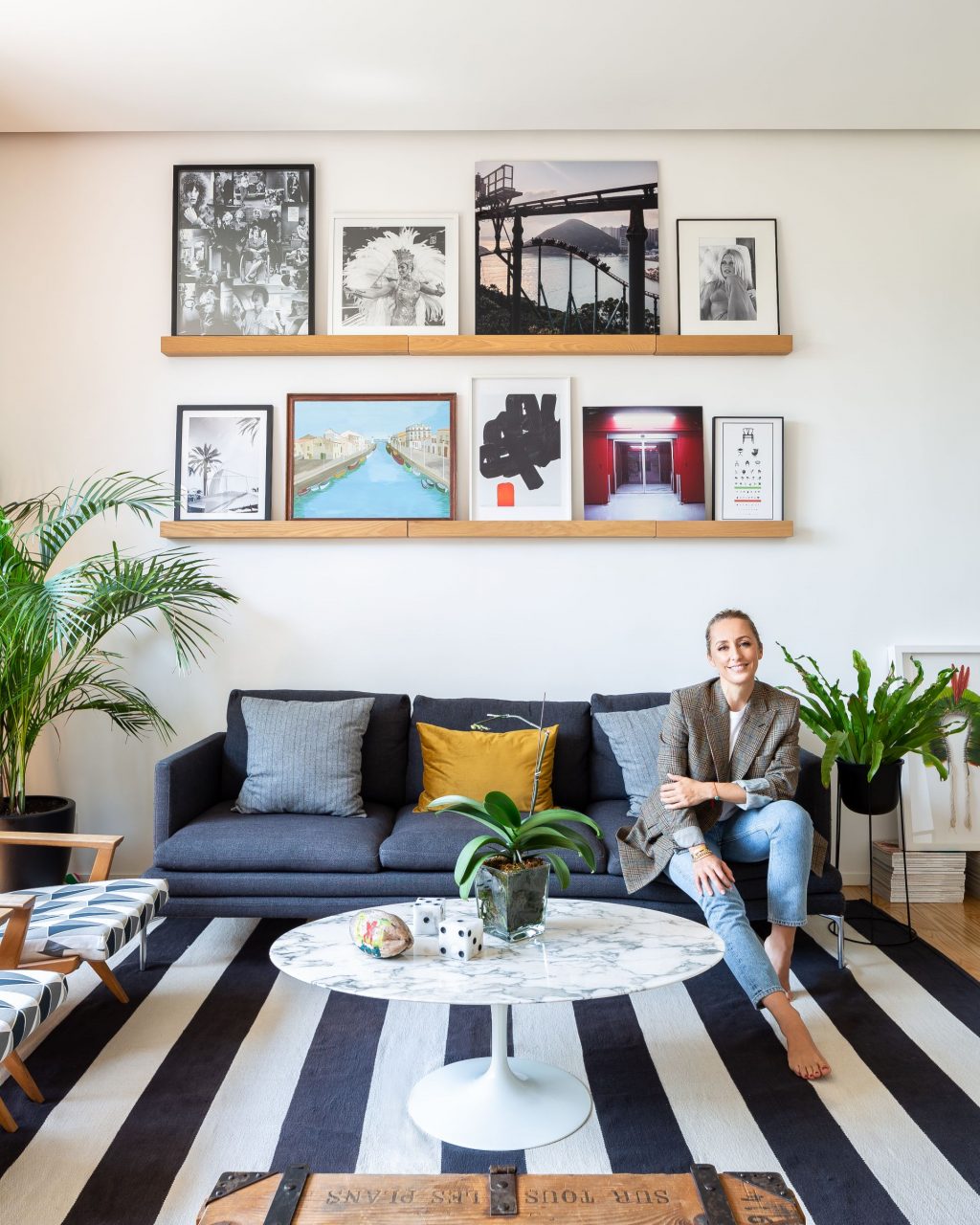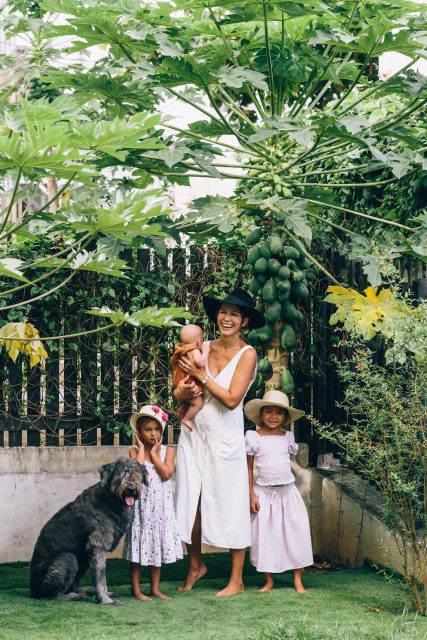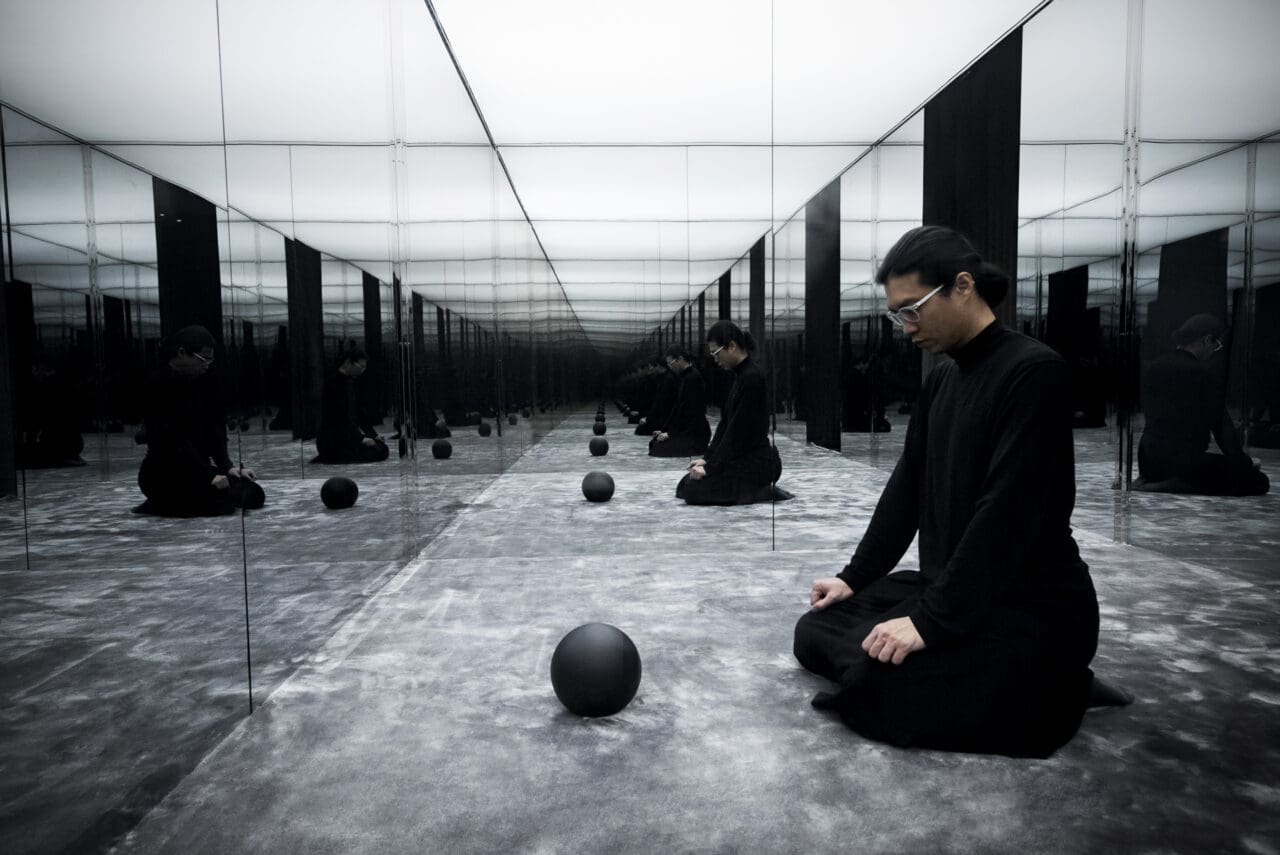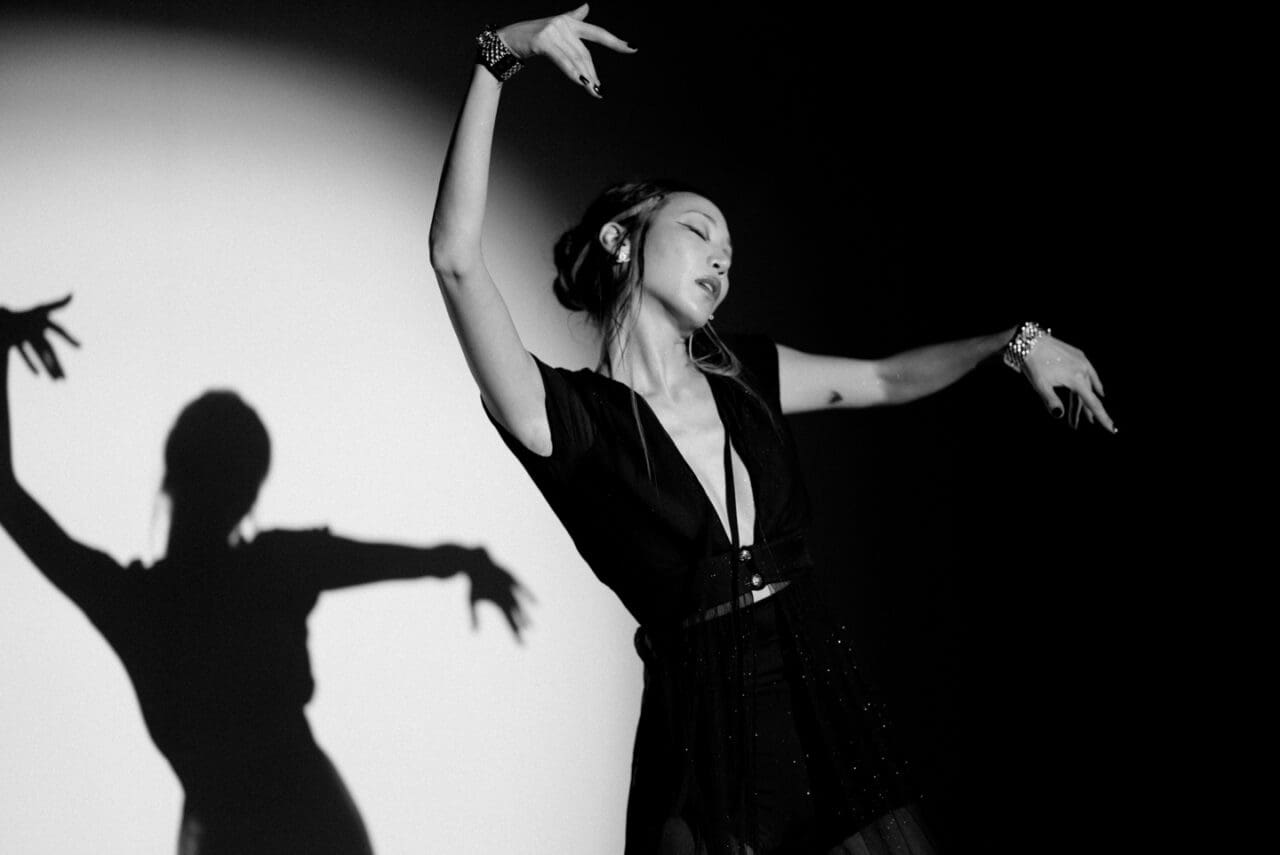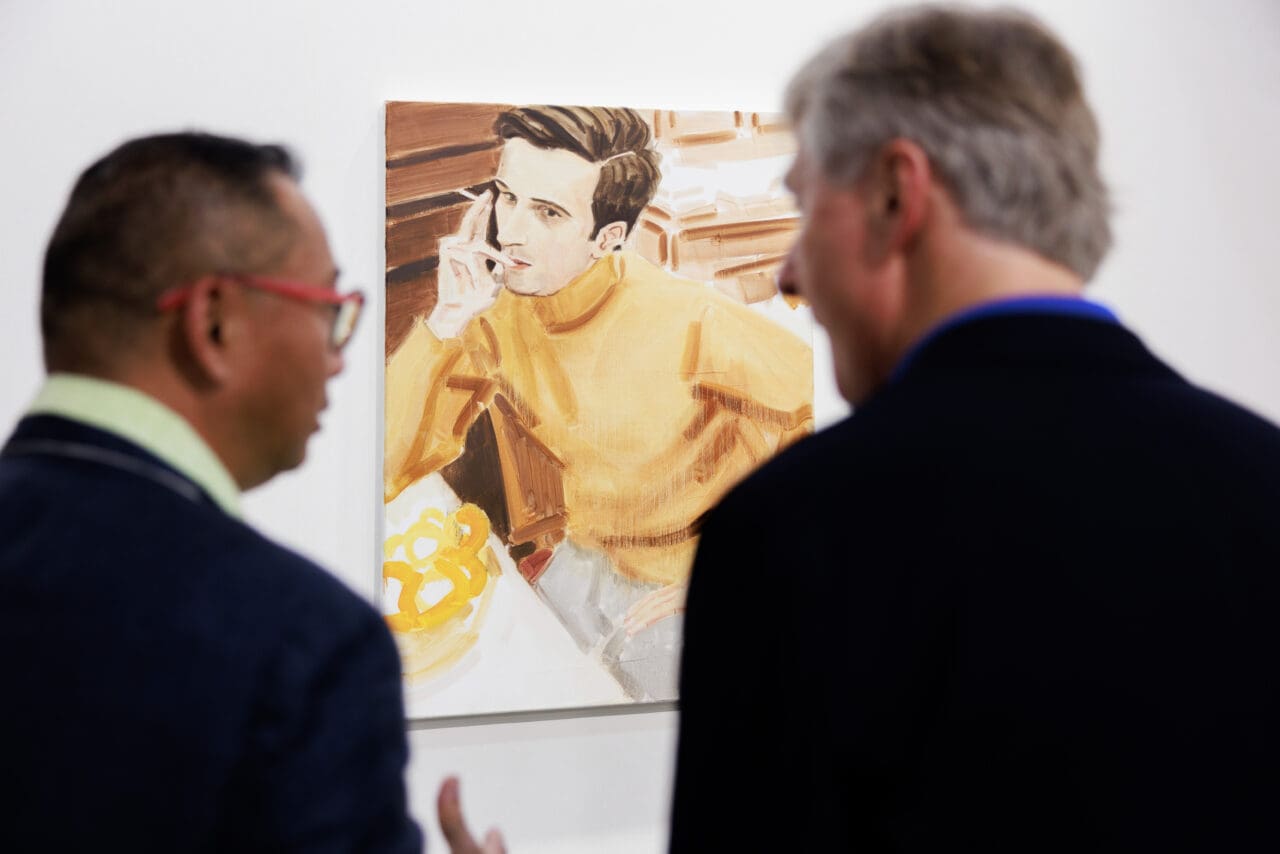Fanny Moizant doesn’t believe in clutter. It’s just as well, given that she’s moved every two years since she got married over 10 years ago. She grew up in the South of France, where her parents still live, before moving to Paris, where she co-founded designer fashion resale emporium Vestiaire Collective. She then moved to London to launch the platform there, and, later, Hong Kong to do the same, where she lent her creative eye to decorating an office space for the team in Wong Chuk Hang. Her belongings have followed – a capsule wardrobe that is regularly rotated thanks to her job, and all of her favourite interior pieces, slotting in “like a puzzle or a rubix cube. We arrive with the same furniture and decoration, and work it out until it fits the place,” says Fanny, who doesn’t appear at all fazed by the latest move, to a five-storey house on a hill overlooking Stanley Bay.
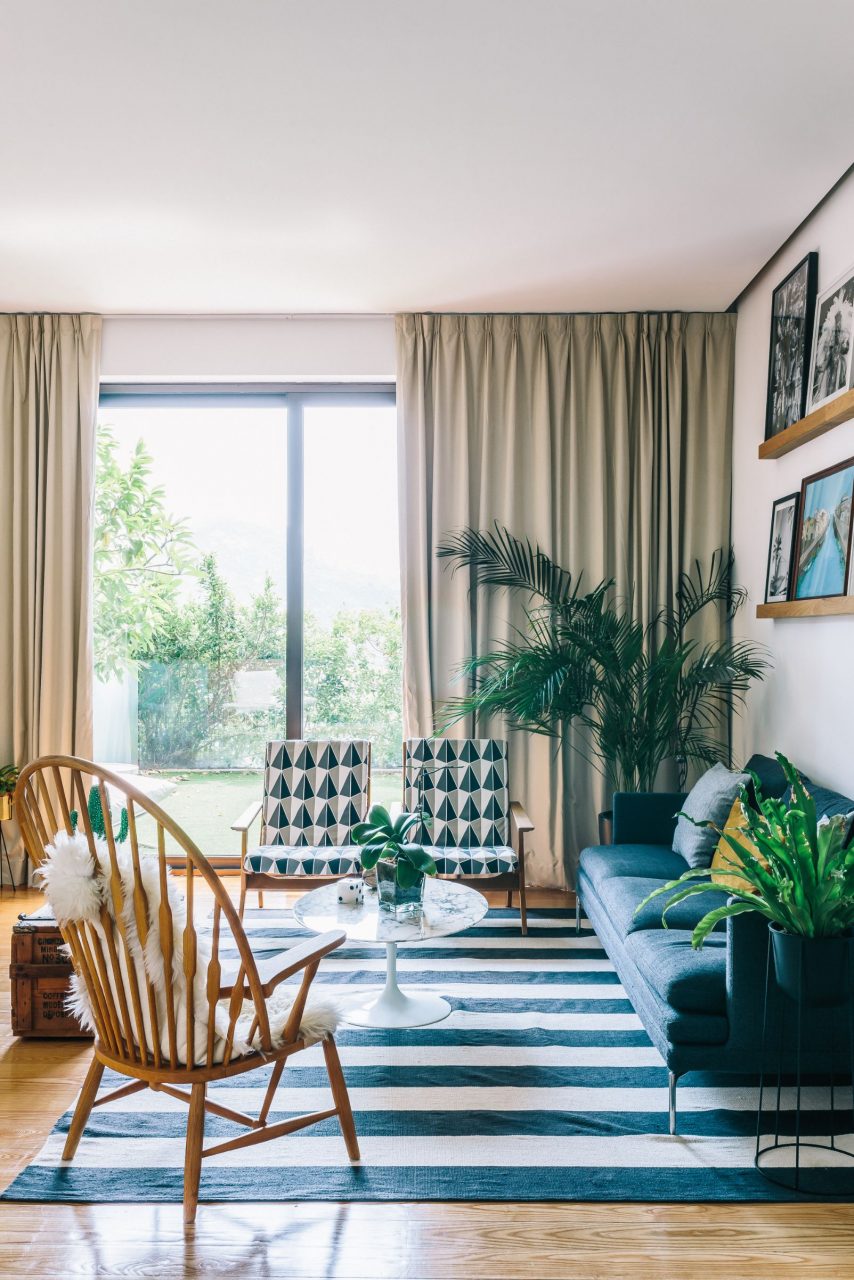
The sitting room is home to a pair of fifties-print deck chairs salvaged from a flea market in France
Photo: Mitchell Geng
“My golden rule to decorating is less is more. People think this place is minimal, but I already think it’s quite overwhelming. I like to have interesting, eye-catching pieces but not too much,” says Fanny of her aesthetic. “The pieces must be practical, whilst also being cocooning and nice to live with.” Despite its size, the house certainly lives up to this “cocooning” effect, providing a much-needed solace for Fanny and her husband who are often travelling for work, and a place they can relax and spend time together with their two daughters (and two cats).
The dining room overlooks Stanley Bay
Photo: Mitchell Geng
This marriage of style and substance can be seen most noticeably on the open-plan ground and first floors, the latter transformed into a sociable but cosy snug and dining room, and the former a library and sitting room that opens out onto a grass-laid garden, enveloped by shrubbery. To decorate, Fanny has combined old-favourite family heirlooms, flea-market finds, and travel trinkets, with pieces sourced at “Vestiaire-but-for-furniture” online store Selency, and contemporary furniture and art from or relating to Hong Kong. The resulting style is eclectic, without being overbearing. “I’m always trying to achieve a balance between new and vintage pieces, to find harmony and a rhythm amongst different heights, colours, patterns, and textures,” says Fanny.
On the first floor, there’s the old barber chest foraged from her parents’ garage in France, and an assortment of sticks that were once planted in the sea for catching oysters and mussels. There are the mismatched mirrors found at a flea market that hang alongside a vintage poster of The Clash’s London Calling album – “I fell in love with The Clash when I moved to London,” Fanny says. On the opposite wall is a framed Amazonian tribe feather crown, brought back from a trip to Brazil, three Basquiat skateboards from Tate Modern gift shop, and a series of steel letters made by Fanny’s father. A compass from Fanny’s first trip to Hong Kong 20 years ago sits in one corner, and a pair of collectible Lanvin dolls from the Elbar Albaz era found on Vestiaire Collective stand to attention on a side table. A soft cream berber rug, a sofa plumped with Fornasetti cushions and a wicker armchair draped in a sheepskin hide add warmth to the space.
Downstairs, the ground floor has a nautical feel – in-keeping with the house’s seaside location – with fifties-print deck chairs salvaged from a flea market, a navy blue-and-white-striped rug, a vintage wooden chest, pots of shells collected by Fanny’s daughters, and an old map that Fanny sourced on eBay and that she felt was reminiscent of her school days. Shelves of framed pictures include one of an Ocean Park roller coaster by Alice Miquel. “It’s what my life looks like,” laughs Fanny.
Fanny sourced a map on eBay that she felt was reminiscent of her school days
Photo: Mitchell Geng
Upstairs is the kitchen, with its decorative Fornasetti plates, and many cook books for when time allows. Up again is the master bedroom, featuring artworks by André Cervera above the bed, and a limited-edition etching by Pierre Soulages, a favourite French artist of Fanny’s – “it’s about how you can produce light using just black paint,” she says of his work. In Fanny’s bedroom are two of her most recent acquisitions: a rattan chair from Tree in Ap Lei Chau; and a trinket table from Lumeun Home, a company set up by Fanny’s friend, who sources vintage furniture from China and creates bespoke pieces with an artisan in Hong Kong. Plants form a common thread throughout the house, all the way up to Fanny’s daughters bedrooms and the roof terrace above, reflecting the surrounding junglescape that reaches down to the sea dotted with sailboats and windsurfers below. “Weekends feel like a holiday here,” Fanny says of her new home.
A set of three Fornasetti plates sit alongside cookbooks on a shelf
Photo: Mitchell Geng
Editor
Alice Riley-SmithCredit
Photography: Mitchell Geng